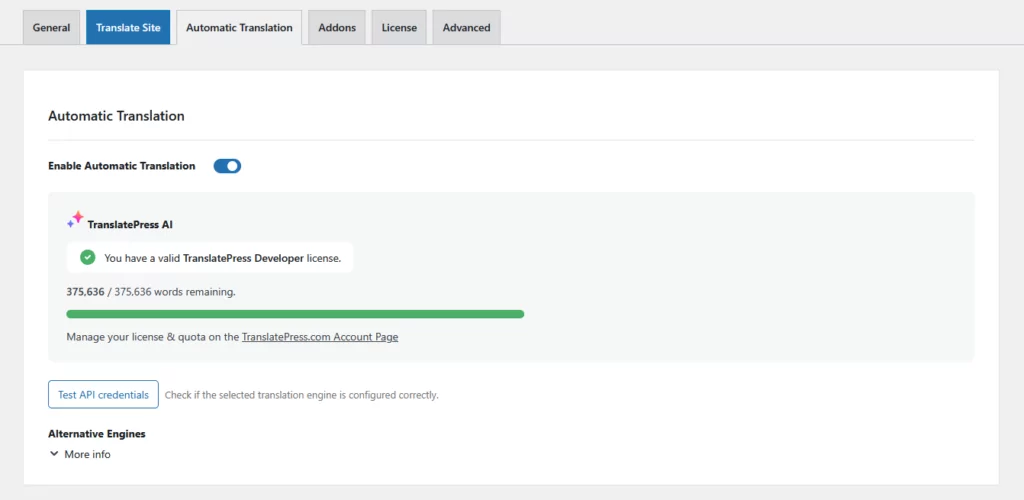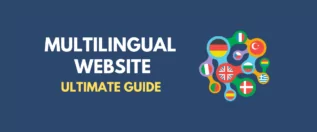
In this post
Are you looking for ways to implement Bing SEO on your website?
After Google, Bing is the second-largest search engine worldwide.
However, given that Google’s constant updates cause significant drops in the ranking of legitimate websites, Bing might just be a good alternative for drawing organic traffic.
Sure, Bing has a way lower market share than Google’s but that could mean low competition.
Besides, Bing’s popularity soared in 2023 after Microsoft introduced an AI-powered version of Bing. More people are using Bing than ever before which is why now is the best time to focus on optimizing your website for Bing SERP.
In this article, we are going to show you the steps you can take to ensure that your website ranks on Bing. We are also going to dive into how Bing is different from Google and share the factors that cause websites to rank on Bing, among other things.
By the end of the article, you will have a decent grasp of how to get your website to rank on the SERP.
Let’s get started.
How is Bing Different From Google Search Engine
On the surface, both Bing and Google may seem similar because both offer search result pages that contain regular search results, images, videos, news, maps, and question-answer suggestions, among other things.
However, there are some key differences in the way the information is presented which offers insight on how Bing operates.
Let’s use the keyword “cheesecake recipes” to check SERP results on Bing and Google.

Google displays:
- Links to web pages with cheesecake recipes
- Suggestions to improve the result (no-bake cheesecake, without sour cream, etc)
- Followed by links to websites
- There are People Also Ask sections with questions like “What is the secret to the best cheesecake?”, “What are the ingredients for a cheesecake?”
- The end of the SERP contains the People Also Search For section with suggestions on different types of cheesecakes
- And other related search keywords
Bing displays:
- Links to web pages with cheesecake recipes
- Suggestions to improve the result (cheesecake cookies, lemon cheesecake, low cal, low fat, etc)
- Followed by links to websites
- YouTube videos and shorts
- People Also Ask section
- Bing Images for cheesecake recipes
- Related search keyword suggestions slide out on the left side of the screen
- On the right side, Bing’s AI has generated cheesecake recipes
- Followed by more search keyword suggestions
- And a list of historical information about cheesecake factories

As you can see, images (with links to the web pages from where the images are sourced) are the topmost section on Bing’s SERP. Upon selecting the “See More” option, Bing starts loading a Pinterest-style image feed. All this proves that, unlike Google, Bing has a major focus on images for search queries like “cheesecake recipes.”
Websites ranking on Bing’s SERP contain tags (looking like keywords) which when selected take you inside the web page to an area where the keyword is located. This implies that keywords play a major role in Bing’s SERP.

The Bing AI recipes are generated from published web pages so it’s a good idea to optimize your posts in ways that encourage the AI to pick your post for image suggestions.

For this particular keyword (i.e. cheesecake recipes), Bing displays a lot more videos (long and short) so it’s safe to say that videos are a major focus of the Bing SERP.
Now that you have some idea of how different Bing and Google search results can be for the same keywords, let’s take a look at Bing’s key ranking factors.
Bing Search Engine’s Key Ranking Factors
Most website owners focus on optimizing their web pages for Google. If you are one of those website owners, you’d be glad to know that Bing also considers many of the same ranking factors as Google, although their relative importance may differ.
Let’s dive into the key ranking factors for Bing:
High content quality & relevancy: The content should cater to the user’s search intent, it should be well-written, and interesting enough to keep the users engaged. Ideally, it should be the best piece on the topic and needs to be written to offer massive value to the users.
High user engagement: Bing looks at the click-through rates, and website dwell time, and site revisits to understand the content quality and overall value a website provides. These engagement metrics serve as powerful indicators of user satisfaction and help Bing determine which sites deserve higher rankings in the SERP.
Exact-match & relevant keywords: Unlike Google, the usage of precise keywords is encouraged on Bing. While Google has moved towards understanding context and user intent, Bing still places significant value on exact keyword matches. This is why each match domain names tend to rank higher in Bing. Besides, exact match keywords, Bing also values relevant keywords as it helps improve the overall relevancy and authority of the piece.
Content freshness: In general, Bing prefers to rank websites where the content is kept regularly updated but the freshness factor applies more on some websites (like news and event sites) and less on others (portfolio sites).
Translations & Local SEO: Websites that are properly translated into the user’s preferred language and optimized for local search terms rank higher than the rest. Translations and local SEO implementations broaden your audience reach and signal to Bing that your site is relevant and valuable to users in your target markets.
Quality backlinks: Bing values backlinks as much as Google does. A high number of backlinks indicates that your website offers significant value but backlinks from low domain authority (DA) websites are unlikely to impress Bing. You need backlinks from authoritative, trustworthy, and relevant websites with high DA.
Fast page loading speed: When users bounce off of your website too soon, it indicates a poor user experience and prompts Bing to rank your website lower in the SERP. Optimizing your site for speed not only improves user satisfaction but also increases your chances of achieving higher rankings in Bing’s search results.
Positive social media signals: Content that draws significant engagement on social platforms is viewed as valuable and reflects positively on a business’s digital presence. Bing places high importance on websites demonstrating active and engaging social media accounts. It indicates trust and high-quality service.
These are the main ranking factors in Bing. In the next section, you will learn how to use this knowledge to optimize a website so that it ranks on the Microsoft Bing search engine.
Bing SEO: How to Optimize Site to Rank on Bing
To be able to rank your website on Bing SERP, you need to implement the following:
1. Conduct Proper Research
Proper research includes finding profitable keywords and adding valuable and unique information to the topics you want to cover.
Use popular tools like Ahrefs, Keywords Everywhere, and SERPStats to find keywords with good search volumes and relevancy to your business.

Research your competitor’s articles and figure out a different and better take on the topic. Add original research (like scanning forums and groups, quoting industry experts, and incorporating case studies or real-world examples, etc) to make the article more valuable than any other piece on the internet.
2. Write Quality Content
“Quality content” is a loaded phrase and it encompasses mainly the following elements:
- Writing with a clear audience in mind
- Clear and concise language, good sentence structures, correct grammar usage
- Fact-checked information from reliable resources
- Original research, expert interviews, or personal experiences
- Incorporation of relevant multimedia like images, videos, infographics, etc
- Logical presentation and is easy to read due to the implementation of headings, subheadings, bullet points, and short paragraphs
- Calls-to-action (CTAs) for user engagement through comments, questions, social sharing prompts, and product trial offers
- Maintenance of consistent presentation, vocabulary, tone, and brand voice
3. Implement On-Page SEO
To implement on-page SEO you need to carry out the following tasks:
- Writing high-quality content
- Sprinkling primary and secondary keywords throughout the page
- Add relevant multimedia
- Add short keyword-rich slugs
- Add primary keywords in the title and first 100 words
- Use sub-headings, bullet points, and images for a clean presentation of the content
- Add primary keywords in the sub-headings
- Write keywords rich easy-to-read meta description tags
- And insert internal and external links
We have two articles covering on-page SEO implementation: SEO For New Websites and How to Get Found on Google.
These guides were written to help websites rank on Google but the same advice applies to websites wanting to rank on Bing.
4. Acquire Backlinks
There are two ways to acquire backlinks. One is to produce high-quality, unique content that naturally attracts backlinks from other websites. The second way is to ask other websites for backlinks through strategic outreach and relationship-building efforts.
We recommend identifying relevant websites in your industry (not direct competitors) and proposing mutually beneficial collaborations and partnerships, such as guest posting on each other’s websites, promoting content, products, or services on each other’s websites, and co-creating webinars, podcasts, and even research studies.
While some businesses prefer buying backlinks, such activities are frowned upon by search engines and can result in penalties.
And besides buying backlinks does not foster authentic relationships with other businesses in your industry and leads to an over-reliance on shortcuts SEO strategies.
5. Implement Multilingual SEO
Businesses targeting users from different parts of the world need to translate their website and social media efforts. That said, translation alone won’t help your site rank on Bing. You also need to translate SEO titles, descriptions, social media tags, image alt text, URL slugs, and other SEO components.
You can get your translators to implement multilingual SEO or it yourself using the world’s most popular and powerful translation plugin – TranslatePress.
It helps you translate SEO titles, meta descriptions, Facebook and Twitter information, image alt tags, and URL slugs, and add a multilingual sitemap.
With TranslatePress, you can translate SEO elements of your website manually or automatically using TranslatePress AI.

Dive into the following tutorials to implement multilingual SEO using TranslatePress:
6. Optimize For Image & Voice Search
Earlier in the article, we demonstrated how the “cheesecake recipes” keywords pull images at the beginning of a Bing search. This tells us that certain keywords are more likely to trigger image results, indicating that images are important for certain content types. We recommend adding high-resolution, visually appealing images and descriptive alt texts to increase your chances of getting displayed on Bing Image Search and drawing traffic to your website.
These days, voice search is used by consumers for activities such as getting quick answers to queries, finding local businesses, and even making online purchases. To optimize your website for voice search you need to add keywords that are longer (also called long-tail keywords) than regular keywords.
The general recommendation is to add question-based keywords like how, what, where, when, why, etc., and to write content conversationally. This approach ensures that your content reflects the way users speak and ask questions in real life and makes it easy for Bing to rank your content for voice search queries.
7. Increase Website Loading Speed
To speed up page loading, consider implementing the following strategies:
- Use lightweight JPEG format images
- Reduce the dimensions and file sizes of images
- Implement lazy loading to delay image loading until the user scrolls down to the image location
- Use a CDN to distribute your content across multiple servers, allow users to access data from the nearest location
- Minimize HTTP requests and minify CSS, JavaScript, and HTML
- Enable browser caching
- Host website on fast hosting services
- (For WordPress sites) Use fast themes, and remove unwanted plugins
Take a look at our guide on speeding up multilingual websites.
8. Focus on Social Media Marketing
This isn’t exactly part of website optimization but we mentioned earlier in the article how positive social media presence impacts a website’s search engine rankings on Bing, so it’s appropriate to include social media marketing in your Bing search engine optimization strategy.
Social media marketing involves activities such as creating and sharing posts, responding to customer inquiries, running targeted advertising campaigns, running social media contests and giveaways, engaging with followers through comments, and collaborating with influencers, among other things.
Learn more: Social Media Marketing Guide
9. Add Site to Bing Webmaster
This is more like a post-Bing-SEO implementation task.
You need to measure the results of your optimization effort. We recommend adding your website to Bing Webmaster and using Bing’s suite of tools to analyze traffic patterns, acquired backlinks, and technical issues, and identify areas for improvement.

Conclusion
Bing is the second most popular search engine tool (after Google) serving approximately 100 million users daily.
The biggest advantage of optimizing your website for Bing is that it’s less competitive than Google, although that does not make it easier to rank. But since few of your competitors are focusing on Bing, so you have a greater chance of gaining higher visibility in Bing’s search results for your business.
To rank your website on Bing, you need to focus on producing high-quality up-to-date content, acquiring quality backlinks, keeping your page loading speed high, building a positive social media presence, and implementing translation and local SEO.
We build TranslatePress – the world’s best translation plugin – to help you create multilingual websites with ease.
TranslatePress Multilingual
And if you have any questions about Bing SEO, let us know in the comment section below.


